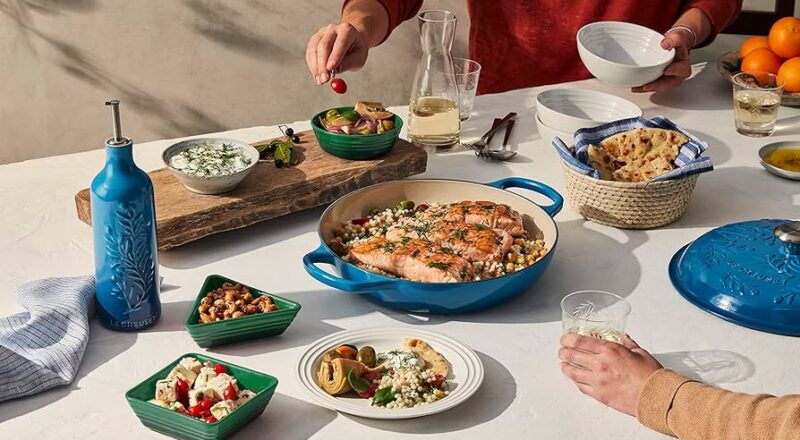When it comes to versatile and durable kitchenware, a cast iron braiser stands out. Known for its ability to handle a wide range of cooking tasks, including browning, braising, and simmering, it’s a favorite among both novice cooks and seasoned chefs. Crucial to its functionality is its temperature tolerance, a topic that deserves a deep dive to fully appreciate its capabilities and limitations.

What is a Cast Iron Braiser?
A cast iron braiser is a round or oval-shaped cooking vessel with a flat bottom and high sides, typically accompanied by a tight-fitting lid. Its design is ideal for searing meats and then slow-cooking them in liquid, a technique known as braising. This process not only tenderizes the meat but also infuses it with flavor.
Importance of Temperature Tolerance
The temperature tolerance of a cast iron braiser is critical because it determines the range of cooking methods it can accommodate. Understanding this tolerance helps in preventing damage to the braiser and ensures optimal cooking results.
High Heat Capacity
One of the hallmark features of cast iron is its high heat capacity. This means it can withstand and maintain high temperatures, making it perfect for searing and frying. Generally, a cast iron braiser can tolerate temperatures up to 500F (260C).
Uniform Heat Distribution
Cast iron’s ability to distribute heat evenly across its surface is another advantage. This property ensures that food cooks consistently, reducing the risk of hot spots that can lead to uneven cooking.
Using Cast Iron Braiser Safely
To maximize the lifespan and performance of your braiser, it’s important to use it within its temperature limits. Overheating can damage the enamel coating and affect the performance of the pot.
Recommended Temperature Range
For most cooking tasks, keeping the braiser within a temperature range of 200F to 450F is recommended. This range allows for slow cooking, simmering, and baking without compromising the integrity of the cookware.
Comparing with Other Cookware
When compared to other cookware, such as non-stick pans or stainless steel, cast iron holds a distinct advantage in terms of heat retention and durability. However, it’s important to note that unlike cast iron, non-stick surfaces should not be exposed to high temperatures to avoid releasing harmful fumes.
Cast Iron Braiser vs. Paella Pan
The cast iron braiser vs. paella pan comparison often highlights the braiser’s superior heat retention, making it more suitable for slow-cooked dishes.
Cast Iron Braiser vs. Multicooker
Cast iron braiser vs. multicooker debates often focus on versatility. While multicookers offer convenience, they cannot replicate the depth of flavor achieved with a braiser’s high-heat capabilities.
FAQ Section
Can you use a cast iron braiser for frying?
Yes, you can use a cast iron braiser for frying thanks to its ability to maintain consistent high temperatures.
Does cast iron braiser change the flavor of food?
No, a cast iron braiser does not impart any flavor of its own. It enhances the natural flavors of the food as discussed here.
Is a cast iron braiser better than a saut pan?
The choice between a cast iron braiser vs. saut pan depends on the cooking technique. A braiser is better for slow-cooking, while a saut pan is ideal for rapid, high-heat cooking.

Conclusion
The cast iron braiser is a versatile tool in the kitchen that can handle a variety of cooking methods due to its robust temperature tolerance. Whether you’re a professional chef or a home cook, understanding how to use and care for your braiser can significantly enhance your culinary creations. For more insights and recipes, you might want to check out this article on the essential features of braisers.
This article contains affiliate links. We may earn a commission at no extra cost to you.

